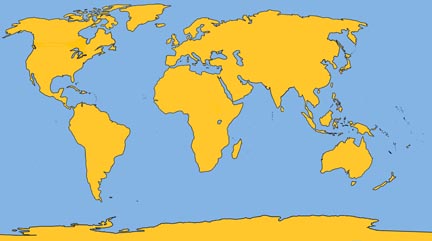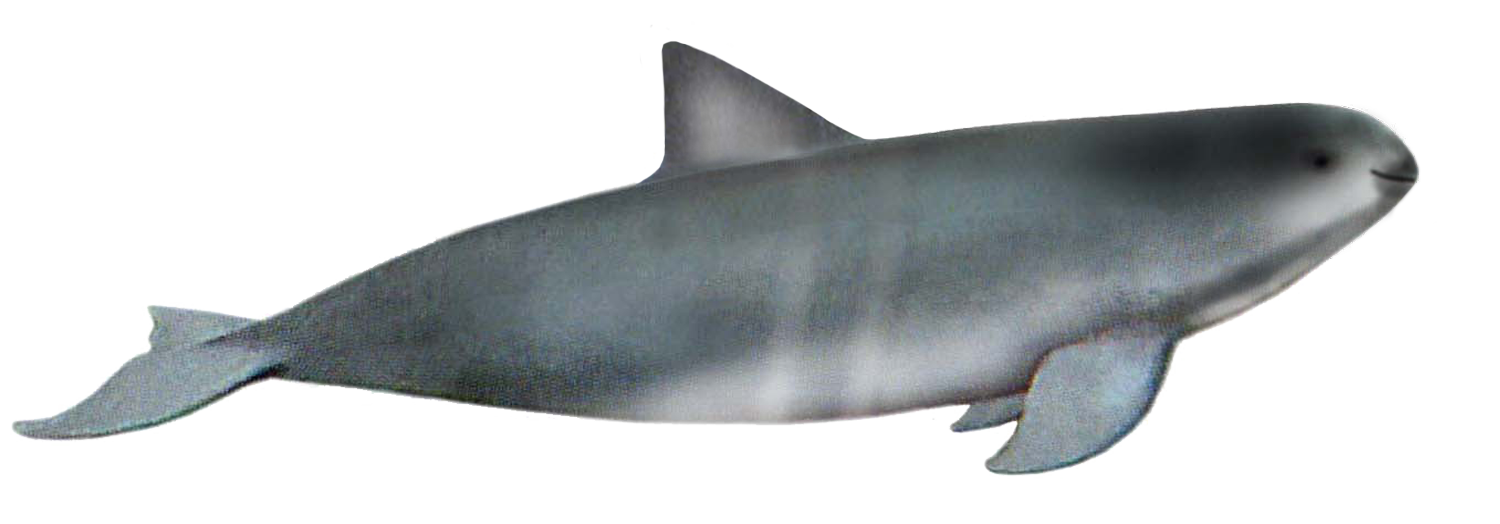Vaquita
Gulf of California Harbor Porpoise
Family: Phocoenidae
Genus: Phocoena
Species: P. sinus Norris and McFarland, 1958
The first confirmation of this animal’s existence occurred in 1950 when the late Dr. Kenneth S. Norris discovered a single skeleton on a beach in eastern Baja California. Since that time the vaquita, the smallest of its genus has been sighted occasionally, although very little has been learned about it. It is an extremely timid creature in the wild and tries to avoid being sighted, evidently with some success, since there are few photographs of it alive and few specimens have been studied by researchers. Many of these animals have been accidentally netted and drowned by local Mexican fishermen, and it is feared that even with extreme protective measures from the Mexican government, the population, currently numbering about 60, may very well already be below its ability to sustain its species. It has the most restricted distribution of any cetacean.
Physical Description: Mexican shrimp fishermen have reported and described several specimens taken accidentally in their nets (see photos). There is no beak, and the blowhole is situated well to the left of the forehead.
Color: They are lead-gray above, gradually lightening to white below. There is a black circle around each eye.
Fins and Flukes: The dorsal fin is more prominent than that of the harbor porpoise; one animal possessed a dorsal fin that was extremely tall and slightly falcate. The flippers are small, rounded at the tips, and on the leading edges. The thin flukes are small, well developed, nearly pointed at the tips, with a definite median notch.
Length and Weight: These animals reach at least 4.5 ft (1.4 m).
Teeth: The upper jaw of one specimen contained 41 small, spade-shaped teeth; the lower jaw contained 36 teeth.
Feeding: Remains of small fish (grunts and gulf croakers) were found in the stomach of one porpoise.
Breathing and Diving: Observed animals usually rise to the surface very quickly, blow unobtrusively, and dive without raising the flukes, disappearing from long periods of time.
Mating and Breeding: Mexican fishermen report May and June sightings of adults with young estimated at 24 in (60 cm) in the estuary of the Rio Colorado at the head of the Gulf.
Herding: On most sightings, two animals have been observed together.
Distribution: They are found only in the upper Gulf of California.
Migration: No information available.
Natural History Notes: They pursue an erratic course after diving and they surface in unpredictable locations.








